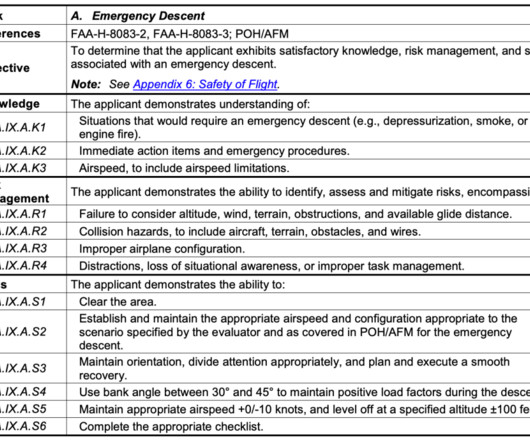A DPE’s Take on Deciphering the ACS: Emergency Descent
Fullthrottle Aviation
FEBRUARY 19, 2022
This provides increased drag and, therefore, the loss of altitude as quickly as possible. If the descent is conducted in turbulent conditions, the pilot must also comply with the design maneuvering speed (VA) limitations. The descent should be made at the maximum allowable airspeed consistent with the procedure used.










Let's personalize your content